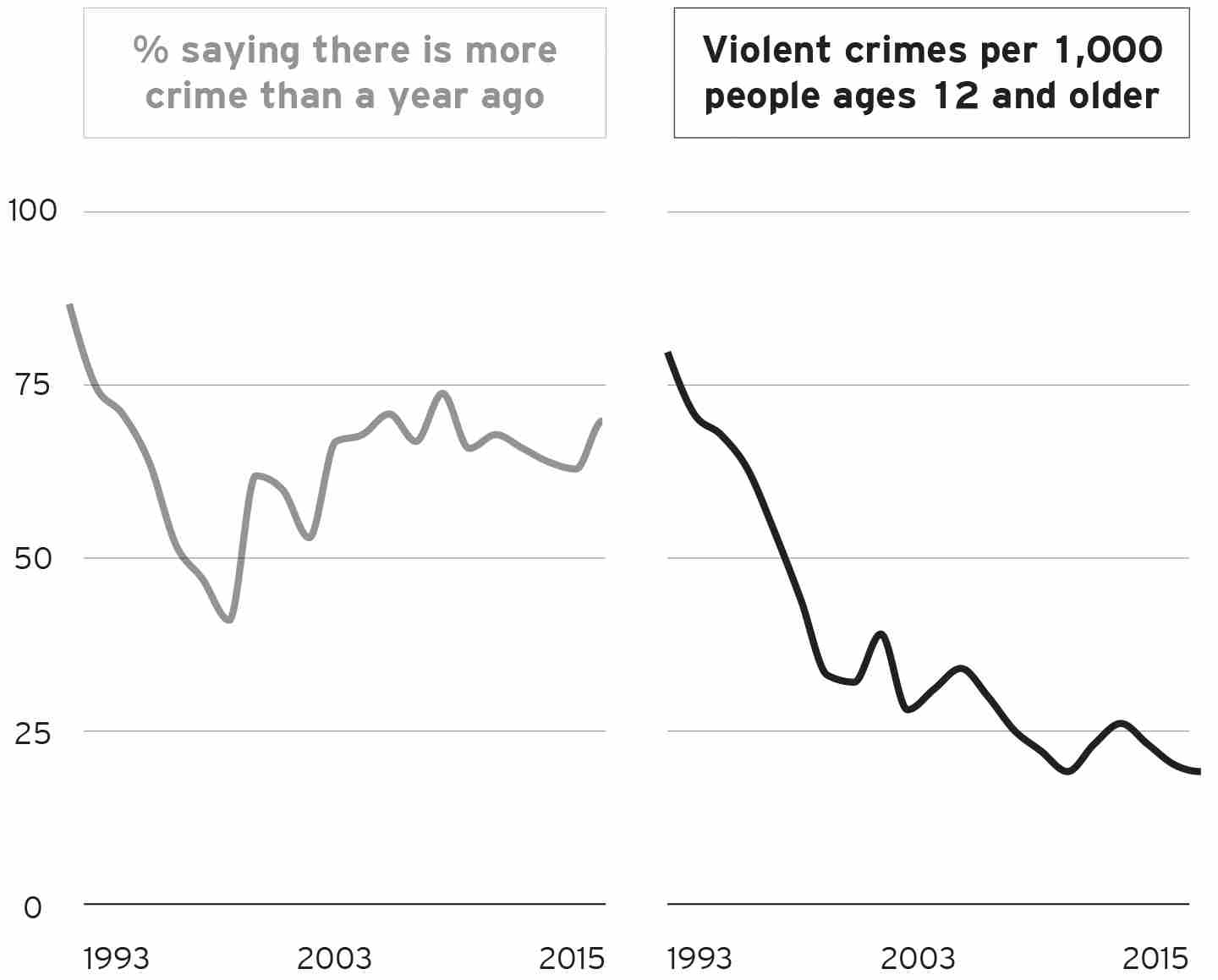Media Fuels Misunderstanding About Crime
During the later years of the postwar era, violent crime began to rise in the U.S., a trend that continued until the early 1990s. By then it had become a central political issue. But in the wake of sustained economic prosperity, violent crime fell as quickly as it had risen—and it continues to fall, though its decline has slowed in recent years.
The reasons are murky, and credit is most likely due to a variety of factors, from an aging population to environmental protections (the reduction of lead pollution may have played a major role) to investments in police to better job prospects to diversion programs. As interesting as why crime fell, however, is the peculiar persistence of our perception that it hasn’t. In 20 of 24 Gallup surveys conducted since 1993, at least 60% of U.S. adults each year think there is more crime nationally than the year before.
What explains this? Politicians love “tough on crime” rhetoric, and crime coverage drives news readership. “If it bleeds, it leads,” goes the old adage. The Brennan Center found that The New York Times included “homicide” or “murder” in 129 headlines in 1990, when the homicide rate in New York City was 31 per 100,000 people. In 2013, when the murder rate had fallen to just 4 per 100,000, the Times had more headline references to homicide and murder: 135. In a social-media-driven future, there’s little reason to hope that we’ll trend away from sensationalism in crime coverage.
52
Perception vs. Reality of U.S. Crime Rate

Source: Pew Research Center.